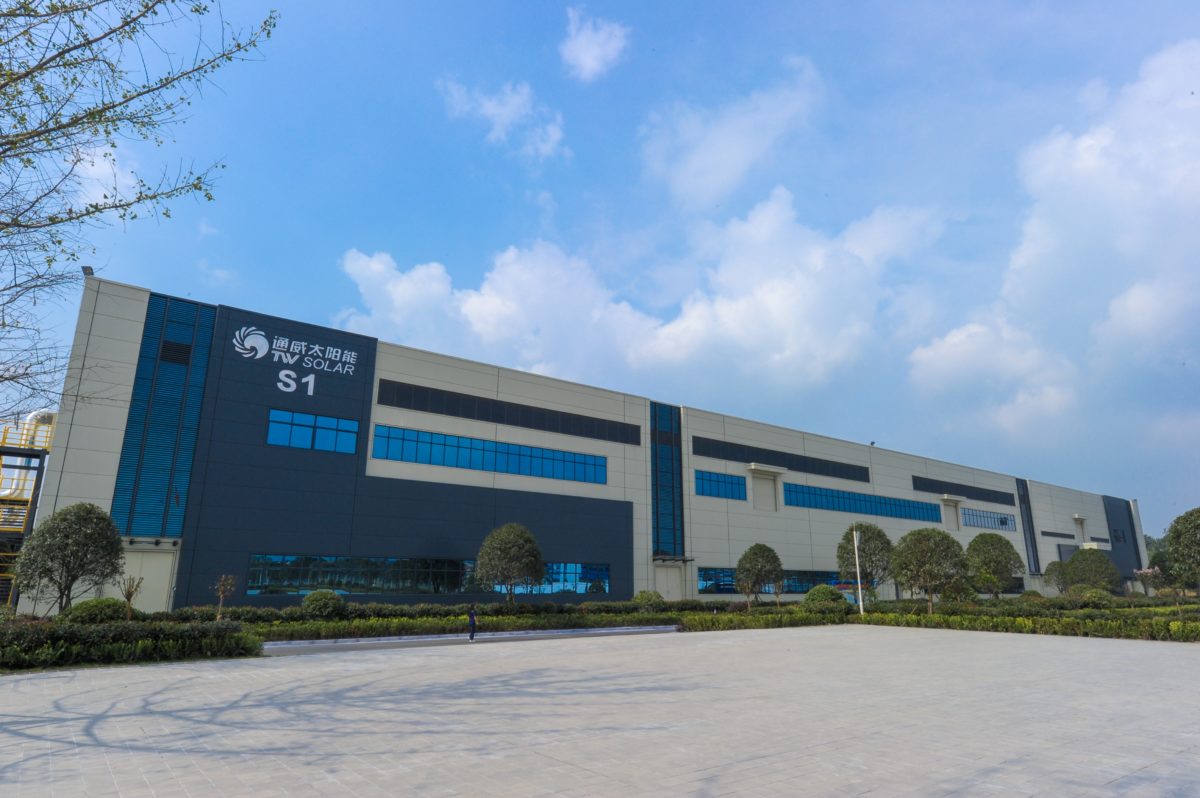Chinese PV conglomerate Tongwei Solar has big plans for high-efficiency solar cell research and development.
The company's R&D manager, Andy Chin, told pv magazine Tongwei is not only working on increasing the efficiency of bifacial and passive emitter rear contact (PERC) technology, but also conducting R&D into a variety of more efficient alternatives, such as Heterojunction (HJ) and Tunnel Oxide Passivated Contact (TOPcon) technologies.
HJ tech, first put into mass production by Sanyo more than 20 years ago, promises efficiencies of around 23 to 24% at present. The basic design calls for wedging intrinsic hydrogenated amorphous silicon layers (a-Si:H) between c-Si wafer and doped layers. The high efficiency comes from a-Si:H’s high surface passivation rate.
TOPcon is built by adding doped polycrystalline silicon between metal contacts and the cell wafer, plus a thin oxide layer. Together, they lower metal contact and cell silicon surface recombination losses. Their efficiency is similar to HJ, although the latter can’t handle the heat from standard metallization solutions.
Production capacity set to expand
Mr. Chin said a 400 MW pilot HJ line will be operational by the end of December. Tongwei is conducting R&D for p-type TOPcon and samples will be developed this year with the product set for market by the second quarter of 2019.
He added, perovskite and HJ plus bifacial are also on the company’s long-term roadmap. Perovskite cells have long been plagued with stability issues, but labs such as Oxford PV have claimed efficiencies as high as 27.3 per cent for perovskite-silicon tandem cells.
Tongwei’s 2020 goal is to expand its cell and module production capacity to 30 GW, from 12 GW today. “It’s a very big challenge,” Mr. Chin said. By next year, Tongwei plans to achieve 18 GW. In common with peers including Longi and Sunport, the company's expansionary aims fly in the face of direful global oversupply predictions from analysts after the Beijing authorities abruptly reined in public subsidies for solar in May.
Popular content
Overseas markets lined up
Originally a polysilicon manufacturer, Tongwei got into the solar cell and module business after purchasing LDK solar in 2013. Its solar facilities are in Hefei, eastern China, and Chengdu, in the southwest.
One of China’s top PV players, the group is also one of the early adopters of “fully autonomous” cell production cell lines, according to Mr. Chin.
Tongwei Group spent $73.7 million on R&D last year, according to its fiscal 2017 report – filed on the Shanghai Stock Exchange – and it collaborates with multiple undisclosed universities.
The international marketing manager of Tongwei told pv magazine in June the company is targeting India, the Middle East, South America and Korea as overseas markets for its cell output.
By Andrew Silver.
This content is protected by copyright and may not be reused. If you want to cooperate with us and would like to reuse some of our content, please contact: editors@pv-magazine.com.


By submitting this form you agree to pv magazine using your data for the purposes of publishing your comment.
Your personal data will only be disclosed or otherwise transmitted to third parties for the purposes of spam filtering or if this is necessary for technical maintenance of the website. Any other transfer to third parties will not take place unless this is justified on the basis of applicable data protection regulations or if pv magazine is legally obliged to do so.
You may revoke this consent at any time with effect for the future, in which case your personal data will be deleted immediately. Otherwise, your data will be deleted if pv magazine has processed your request or the purpose of data storage is fulfilled.
Further information on data privacy can be found in our Data Protection Policy.